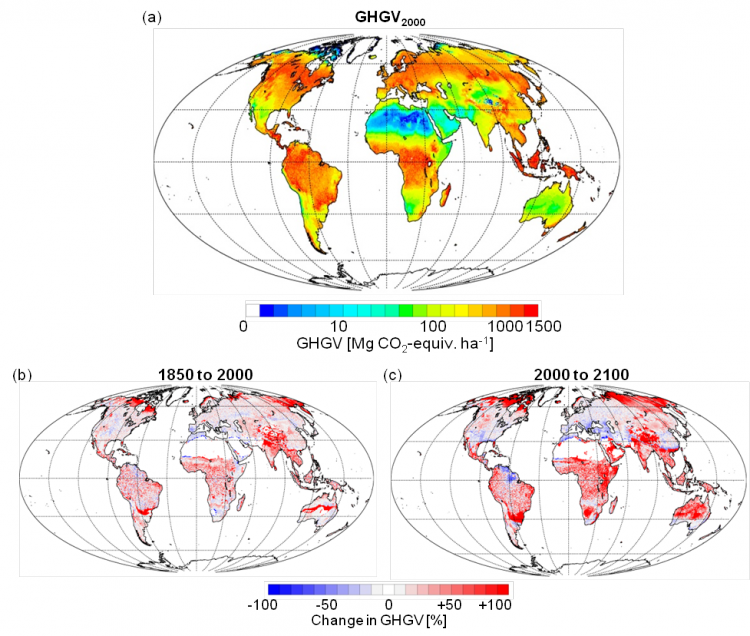
The services that terrestrial ecosystems provide arise from natural ecosystem functioning as governed by drivers such as climate, atmospheric carbon dioxide mixing ratio, and land-use change. From the perspective of carbon sequestration, numerous studies have assessed trends and projections of the past and future terrestrial carbon cycle, but links to the ecosystem service concept have been hindered by the lack of appropriate quantitative service metrics. The recently introduced concept of the Greenhouse Gas Value (GHGV) is a metric that accounts for the land-atmosphere exchanges of multiple greenhouse gases by taking into consideration the associated ecosystem pool sizes, annual exchange fluxes, and probable effects of natural disturbance in a time-sensitive manner.
In a recently published article, OPERAs researchers Anita Bayer and Almut Arneth use a dynamic global vegetation model to derive the contribution of CO2 to GHGV as a quantitative indicator of terrestrial carbon sequestration. For the first time GHGV could be presented in a spatially explicit manner on the global scale and for different time periods, ranging from pre-industrial periods to future scenarios (1850–2100). Evaluations are done on the basis of major global biomes.
GHGV is found to vary substantially depending on the biogeochemical processes represented in the model (e.g. the coupling of carbon and nitrogen dynamics in plants and soils, whether crop and pasturelands were represented). Also the consideration of disturbance events that occur as part of an ecosystem’s natural dynamics is crucial for realistic GHGV assessments; their omission results in unrealistically high GHGV. Among the global major biomes, the forest biomes attract notice for their relevance in maintaining and increasing biogeochemical carbon sequestration. Under future climate and carbon dioxide levels GHGV values of the forest biomes are projected to increase, especially so in tropical forests, but projected land-use change (e.g. deforestation) opposes this trend. The GHGV of ecosystems, especially when assessed over large areas, is an appropriate metric to assess the contribution of different greenhouse gases to climate and forms a basis for the monetary valuation of the climate regulation service ecosystems provide.
Link to the article:
http://www.sciencedirect.com/science/article/pii/S0959378015000345
